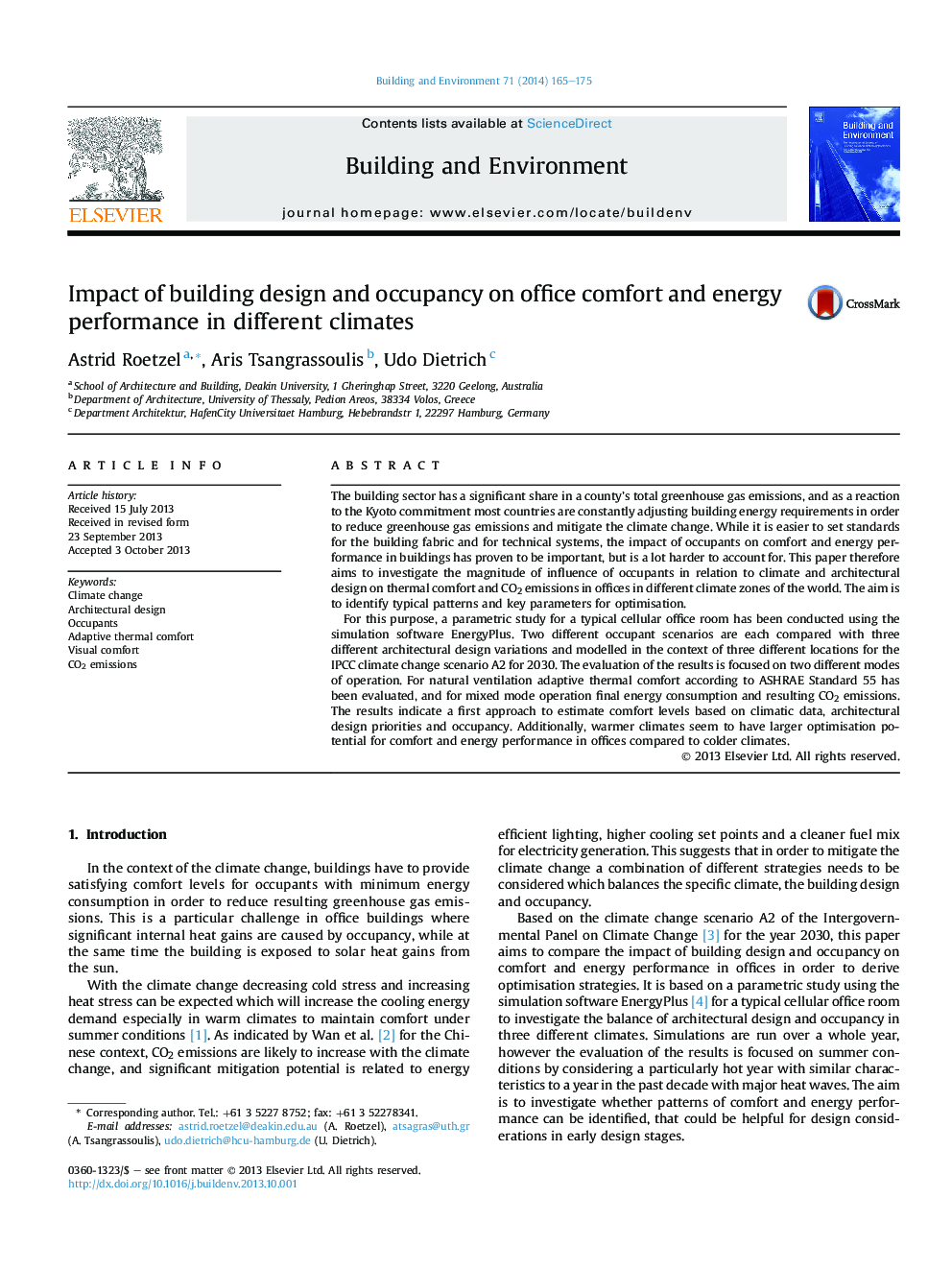| کد مقاله | کد نشریه | سال انتشار | مقاله انگلیسی | نسخه تمام متن |
|---|---|---|---|---|
| 248246 | 502555 | 2014 | 11 صفحه PDF | دانلود رایگان |
• Impact of climate, building design & occupants on comfort + energy performance.
• Analysis based on climate change scenario for a hot year in 3 different climates.
• Ideal + worst case scenario approach to occupant modelling for early design stages.
• Development of a method to estimate adaptive thermal comfort in early design stages.
• Occupants influence energy performance, building design influences comfort.
The building sector has a significant share in a county's total greenhouse gas emissions, and as a reaction to the Kyoto commitment most countries are constantly adjusting building energy requirements in order to reduce greenhouse gas emissions and mitigate the climate change. While it is easier to set standards for the building fabric and for technical systems, the impact of occupants on comfort and energy performance in buildings has proven to be important, but is a lot harder to account for. This paper therefore aims to investigate the magnitude of influence of occupants in relation to climate and architectural design on thermal comfort and CO2 emissions in offices in different climate zones of the world. The aim is to identify typical patterns and key parameters for optimisation.For this purpose, a parametric study for a typical cellular office room has been conducted using the simulation software EnergyPlus. Two different occupant scenarios are each compared with three different architectural design variations and modelled in the context of three different locations for the IPCC climate change scenario A2 for 2030. The evaluation of the results is focused on two different modes of operation. For natural ventilation adaptive thermal comfort according to ASHRAE Standard 55 has been evaluated, and for mixed mode operation final energy consumption and resulting CO2 emissions. The results indicate a first approach to estimate comfort levels based on climatic data, architectural design priorities and occupancy. Additionally, warmer climates seem to have larger optimisation potential for comfort and energy performance in offices compared to colder climates.
Journal: Building and Environment - Volume 71, January 2014, Pages 165–175
